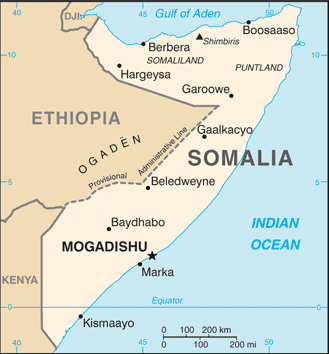Investing in Somalia


Despite the lack of effective national governance, Somalia has maintained a healthy informal economy, largely based on livestock, remittance/money transfer companies, and telecommunications. Agriculture is the most important sector with livestock normally accounting for about 40% of GDP and more than 50% of export earnings. Nomads and semi-pastoralists, who are dependent upon livestock for their livelihood, make up a large portion of the population. Livestock, hides, fish, charcoal, and bananas are Somalia's principal exports, while sugar, sorghum, corn, qat, and machined goods are the principal imports. Somalia's small industrial sector, based on the processing of agricultural products, has largely been looted and the machinery sold as scrap metal. Somalia's service sector also has grown. Telecommunication firms provide wireless services in most major cities and offer the lowest international call rates on the continent. In the absence of a formal banking sector, money transfer/remittance services have sprouted throughout the country, handling up to $1.6 billion in remittances annually. Mogadishu's main market offers a variety of goods from food to the newest electronic gadgets. Hotels continue to operate and are supported with private-security militias. Due to armed attacks on and threats to humanitarian aid workers, the World Food Programme partially suspended its operations in southern Somalia in early January 2010 pending improvement in the security situation. Somalia's arrears to the IMF have continued to grow.
Golis Telecom Somalia - http://www.golistelecom.com/
NationLink Telecom - http://www.nationlinktelecom.com/
Somafone Telecommunications - http://www.somafone.com/
Somali Telecom Group - http://www.somalitelecomgroup.com/
Telcom Somaliland - http://www.telcomsomaliland.com/
Somalia News
Garowe Online (Garowe) - http://www.garoweonline.com
Shabelle Media Network (Mogadishu) - http://www.shabelle.net/news/english.htm
Countries that border Somalia: Djibouti | Ethiopia | Kenya
Learn more:
Back to Country Investing



